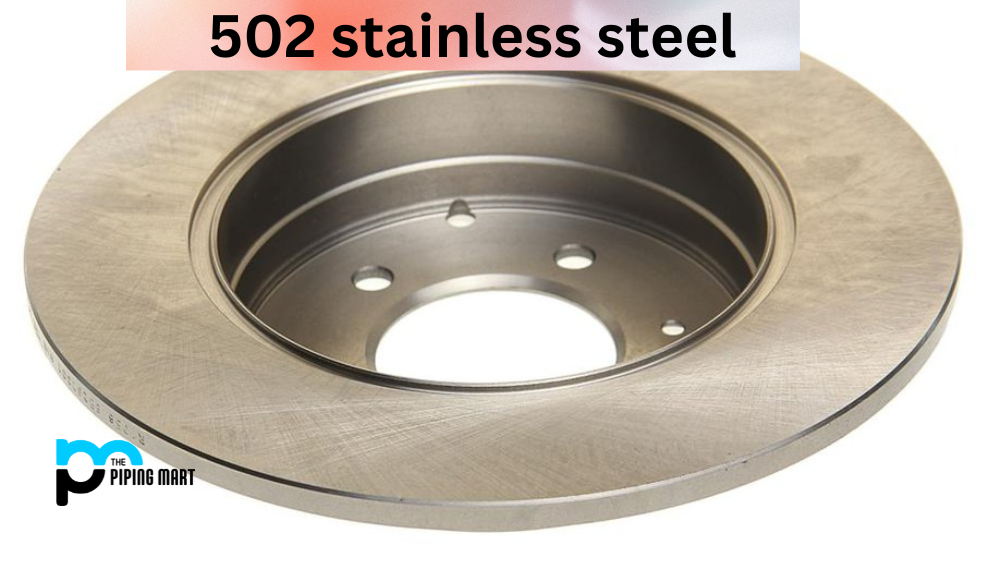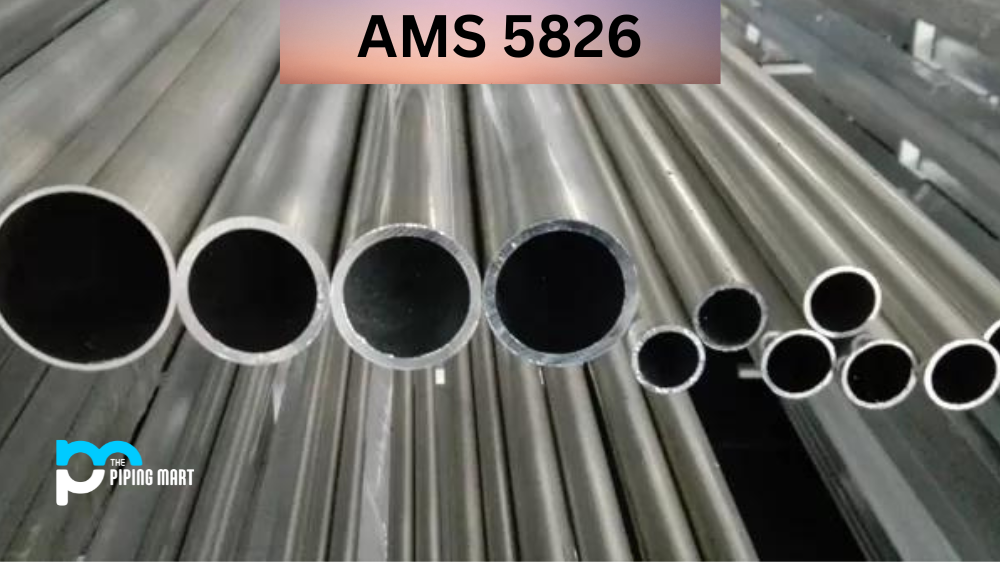410 stainless steel is martensitic stainless steel, which means it has a high level of hardness. This type of steel is also corrosion-resistant, making it ideal for applications in many industries. In this article, we will explore the properties and uses of 410 stainless steel to better understand why it’s so popular.
What Forms is 410 Stainless Steel Available at Piping Mart?
- 410 Stainless Steel Bars
- 410 Stainless Steel Bolts
- 410 Stainless Steel Pipes
- 410 Stainless Steel Screw
- 410 Stainless Steel Tubing
- 410 Stainless Steel Valves
- 410 Stainless Steel Washers
- 410 Stainless Steel Flanges
- 410 Stainless Steel Fasteners
- 410 Stainless Steel Electrodes
- 410 Stainless Steel Stud Bolts
410 Stainless Steel Composition
UNS S41000 is commonly used for Inconel sheet applications due to its impressive chemical composition. This alloy contains 11.5-13.5 percent chromium, 0.15 max carbon, 1.0 max manganese, and 1.0 max silicon which provides it with the strength and good corrosion resistance needed in many industrial processes. It also contains nickel and molybdenum to provide additional protection against wear. This combination of elements gives this steel the added boost needed to create some of the most useful Inconel sheets available today.
| Grade | C | Mn | Si | P | S | Cr | Ni | |
|---|---|---|---|---|---|---|---|---|
| 410 | min. max. |
– 0.15 |
– 1 |
– 1 |
– 0.04 |
– 0.03 |
11.5 13.5 |
0.75 |
410 Stainless Steel Physical Properties
SS 410 is a popular material for Inconel sheets due to its desirable physical properties. It has excellent strength and hardness, making it suitable for a variety of applications. In addition, its corrosion resistance makes it a great choice in harsh environments. 410 stainless steel also carries its own unique qualities, such as being relatively easy to machine and weld. Combined with its moderate price point, these attributes make it a versatile material found in many industries.
| Grade | Density (kg/m3) | Elastic Modulus (GPa) | Mean Coefficient of Thermal Expansion (μm/m/°C) | Thermal Conductivity (W/m.K) | Specific Heat 0-100 °C (J/kg.K) | Electrical Resistivity (nΩ.m) | |||
|---|---|---|---|---|---|---|---|---|---|
| 0-100 °C | 0-315 °C | 0-538 °C | at 100 °C | at 500 °C | |||||
| 410 | 7800 | 200 | 9.9 | 11 | 11.5 | 24.9 | 28.7 | 460 | 570 |
410 Stainless Steel Mechanical Properties
410 SS has excellent tensile strength, which makes it well-suited to high-load applications such as aircraft landing units and safety equipment. In addition to its strong resistance to stress and strain, it also features outstanding wear resistance, allowing it to withstand abrasive environments incredibly well. This makes 410 stainless steel ideal for use in the automotive and industrial sectors. Its machinability translates into increased efficiency and productivity. With superior mechanical properties and durability, Inconel sheet made from 410 stainless steel provide long-term performance at an economical price point.
| Tempering Temperature (°C) | Tensile Strength (MPa) | Yield Strength 0.2% Proof (MPa) | Elongation (% in 50 mm) | Hardness Brinell (HB) | Impact Charpy V (J) |
|---|---|---|---|---|---|
| Annealed * | 480 min | 275 min | 16 min | – | – |
| 204 | 1475 | 1005 | 11 | 400 | 30 |
| 316 | 1470 | 961 | 18 | 400 | 36 |
| 427 | 1340 | 920 | 18.5 | 405 | # |
| 538 | 985 | 730 | 16 | 321 | # |
| 593 | 870 | 675 | 20 | 255 | 39 |
| 650 | 300 | 270 | 29.5 | 225 | 80 |
410 Stainless Steel Properties
The primary properties that make 410 stainless steel attractive to metalworkers are its high level of hardness and its resistance to corrosion. The high level of hardness makes it an ideal choice for parts that need to be machined or shaped with precision. It also makes it great for applications that require wear resistance, such as bearings, gears, and other moving parts. Additionally, its ability to resist corrosion makes it suitable for many different environments where other materials may not last as long.
General Properties
410 stainless steel is a martensitic stainless steel that contains 11.5% chromium. This alloy is known for its good corrosion resistance, machinability, and weldability. Additionally, 410 stainless steel is commonly used in the food and beverage industry as it does not absorb food flavors or odors.
Corrosion Resistance
One of the most important properties of 410 stainless steel is its corrosion resistance. This alloy contains chromium, which forms a thin layer of oxide on the surface of the metal that protects it from corrosion. Additionally, 410 stainless steel is resistant to salt water and other corrosive environments.
Machinability
Another important property of 410 stainless steel is its machinability. This alloy can be easily machined using both conventional and CNC machine tools. Additionally, 410 stainless steel can be welded using all common welding methods.
Weldability
As mentioned above, 410 stainless steel can be easily welded using all common welding methods. This alloy also has good weldability when compared to other martensitic stainless steels.
Heat Treatment
410 steel Material can be heat treated to achieve a variety of mechanical properties. For example, this alloy can be hardened by heating it to 1050°F (565°C) and then quenching it in water or oil.
410 Stainless Steel Equivalent
| Grade | UNS No | Old British | Euronorm | Swedish SS | Japanese JIS | ||
|---|---|---|---|---|---|---|---|
| BS | En | No | Name | ||||
| 410 | S41000 | 410S21 | 56A | 1.4006 | X12Cr13 | 2302 | SUS 410 |
410 Stainless Steel Specifications
| Type | Sizes | Schedules | ASTM Standards |
|---|---|---|---|
| 410 Stainless Steel Bar | A276, A479 | ||
| 410 Stainless Steel Butt Weld Fittings | 1/2″ thru 12″ | Sch 10, 40, 80, 160 & XXH | A815 |
| 410 Stainless Steel Forgings | A182 | ||
| 410 Stainless Steel Pipe Welded & Seamless | 1/4″ thru 16″ | Sch 10, 40, 80, 160 & XXH | A268 |
| 410 Stainless Steel Plate | A240 |
410 Stainless Steel Uses
Because of its unique combination of properties, 410 stainless steel can be used in a wide variety of industrial applications. It’s often used for shafts and bolts in machinery because of its hardness and wear-resistance properties. Its ability to resist corrosion makes it suitable for use in marine environments as well as in food processing plants where hygiene is paramount. Additionally, because it can be easily formed into various shapes without losing any of its strength or durability, it’s commonly used in architectural projects like decorative railings or sculptures.
Conclusion:
In conclusion, there are many reasons why stainless steel 410 has become one of the most popular materials used by metalworkers today. Its hard yet durable nature, combined with its excellent corrosion resistance, make it perfect for a wide variety of industrial applications ranging from machinery components to architectural projects. Whether you’re looking for a material that can withstand extreme wear and tear or something that won’t corrode when exposed to salt water or other harsh elements, you should consider using 410 stainless steel on your next project!

Abhishek is a seasoned blogger and industry expert, sharing his insights and knowledge on various topics. With his research, Abhishek offers valuable insights and tips for professionals and enthusiasts. Follow him for expert advice on the latest trends and developments in the metal industry.




